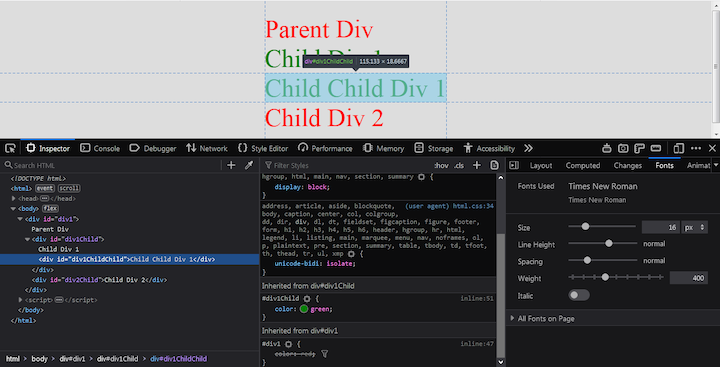
 Your real problem might be different – you seem to be looking at the part of style sheets that constitute a browser style sheet. To do that you can use the element with the href attribute that is equal to the URL of the font in the of your page.
Your real problem might be different – you seem to be looking at the part of style sheets that constitute a browser style sheet. To do that you can use the element with the href attribute that is equal to the URL of the font in the of your page. If you don’t set fonts at all, browsers defaults will be used. Note: The line-height property sets the space between lines. If one of the other values is missing, their default value are used. This gives ease to the coding, as a common property need not be styled twice or multiple times. Inheritance is one such feature that leverages the ability to use a styling feature of the parent entity in a child entity.

The font-size and font-family values are required. Cascading style sheet offers all the dynamic features needed by a developer to make the coding practice standardized. If there is a continuous chain of elements (in the sense of parent-child relationships) from the root element to the current element, all with font-family set to inherit or not set at all in any style sheet (which also causes inheritance), then the font is the browser default. The font property is a shorthand property for: font-style. This means that the browser’s default font family is used. There are two ways for a child element to inherit properties.

The font-family property is special in the sense that the initial value is not fixed in the specification but defined to be browser-dependent. The initial value is defined for each property in CSS specifications. The eotsrc, woffsrc, ttfsrc and svgsrc should be left blank. Create a new font scheme where you only add the references for the largeimgsrc and smallimgsrc. For the root element (in HTML documents, for the html element) there is no parent element by definition, the value used is the initial value of the property. First create two image files for your Google font (large: 109x16 pixels - small: 75x10 pixels) that you want to use and upload it to a library on your site. The inherit value, when used, means that the value of the property is set to the value of the same property of the parent element.


 0 kommentar(er)
0 kommentar(er)
